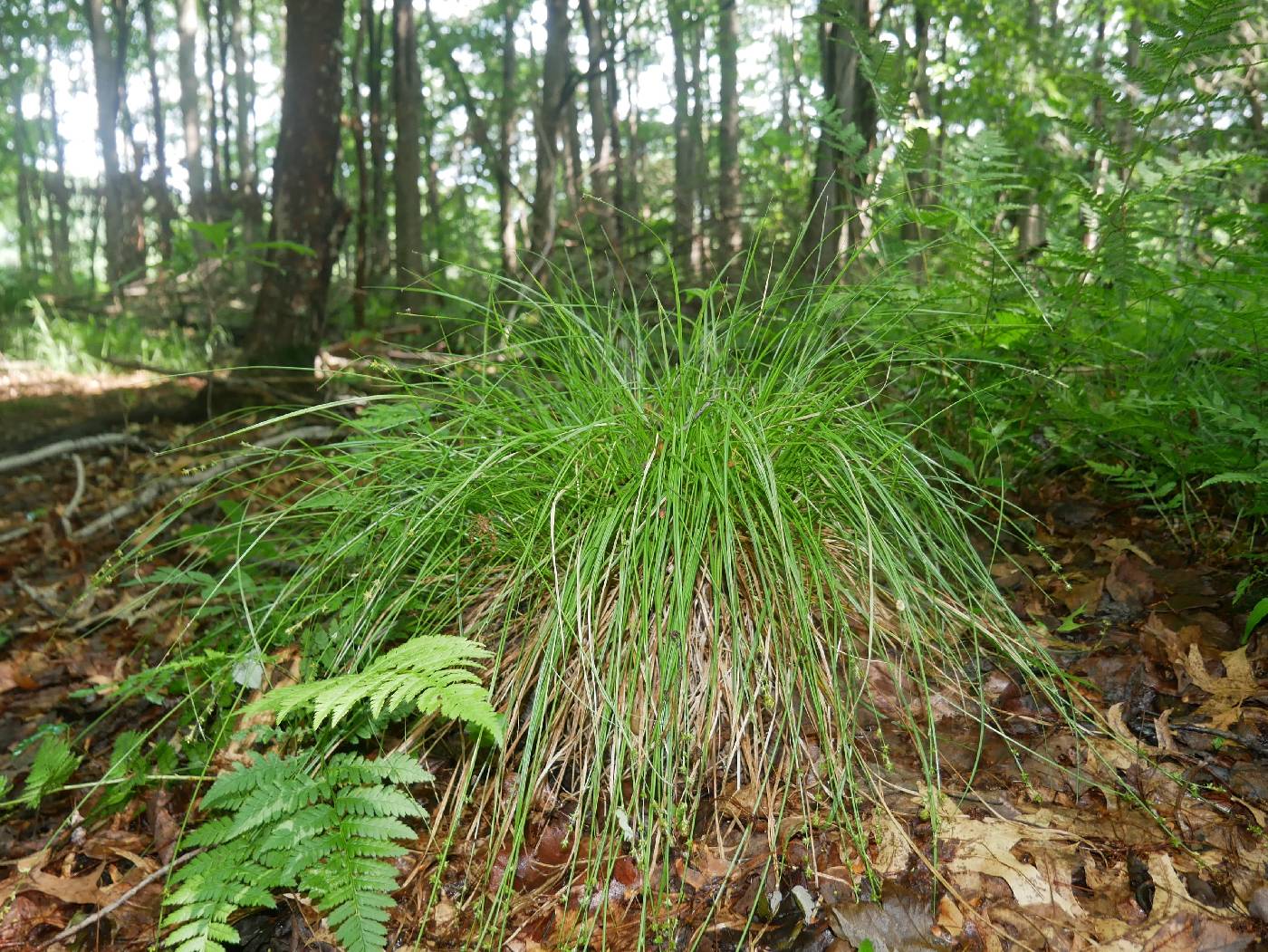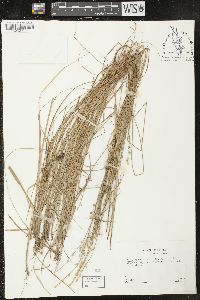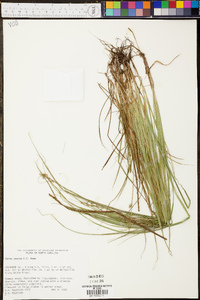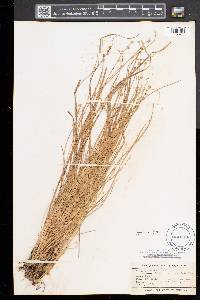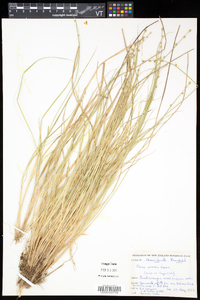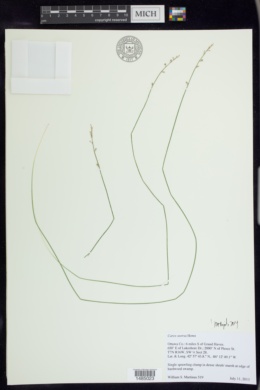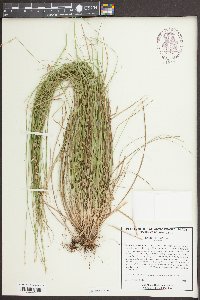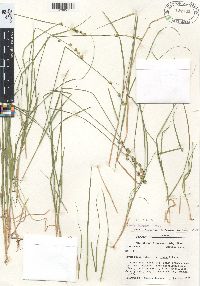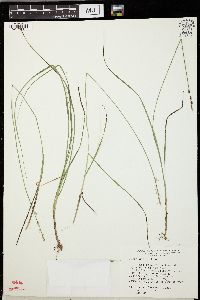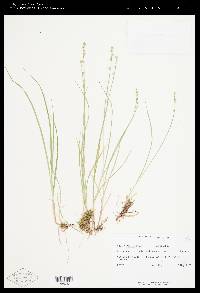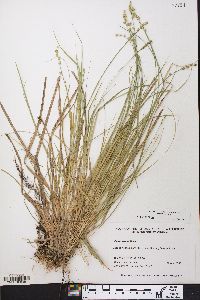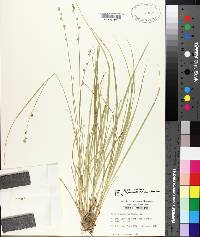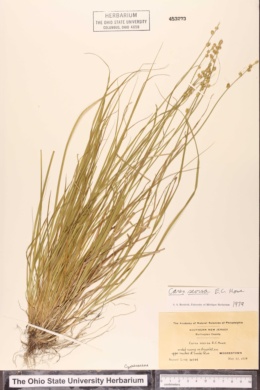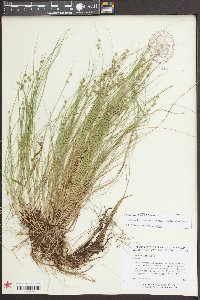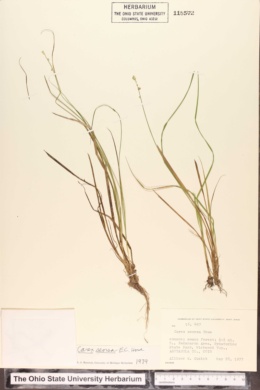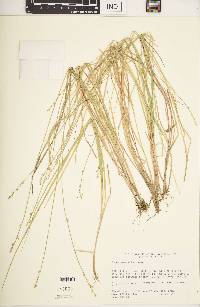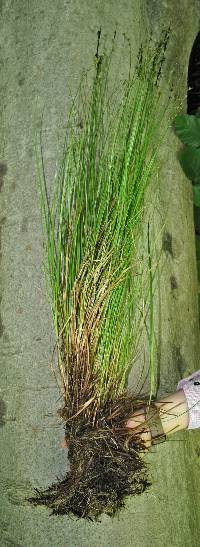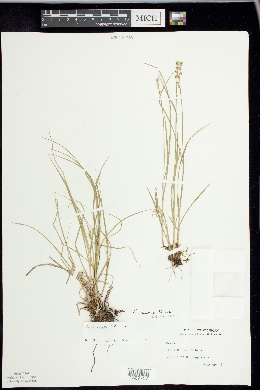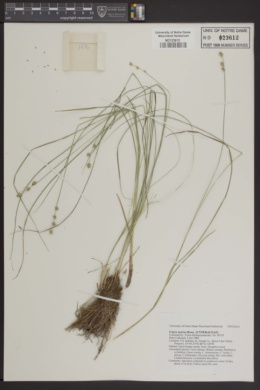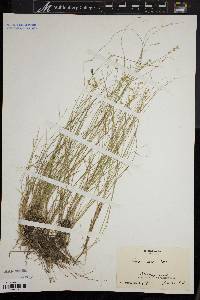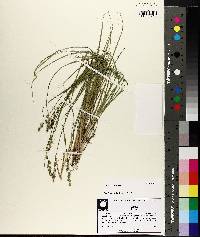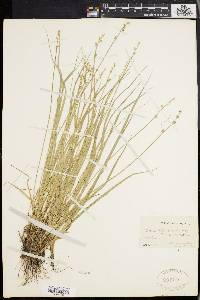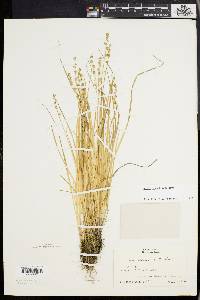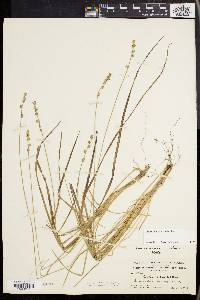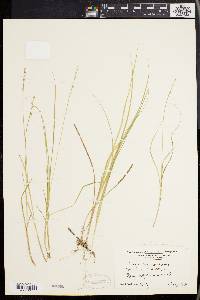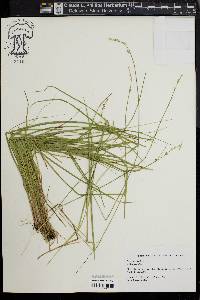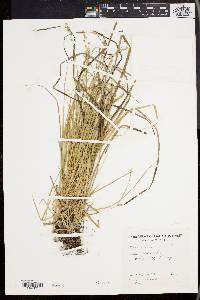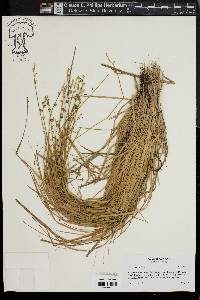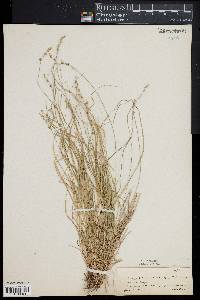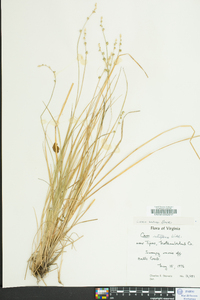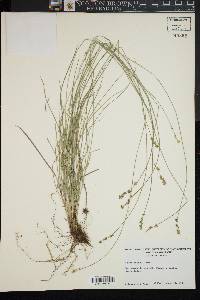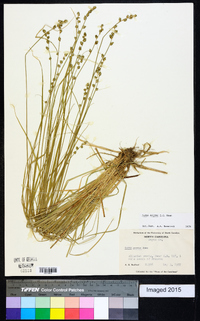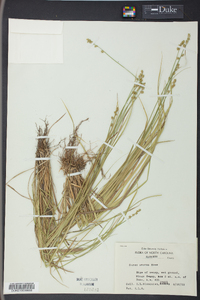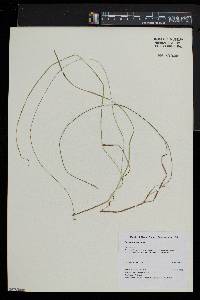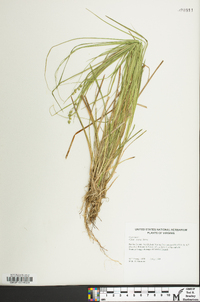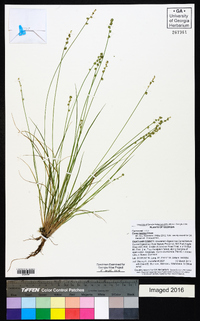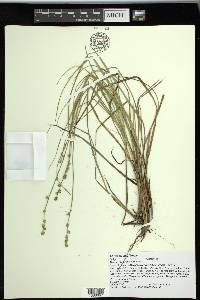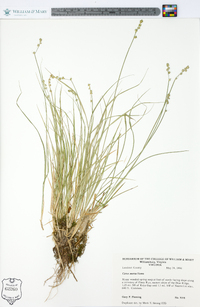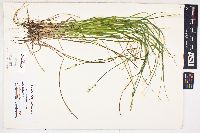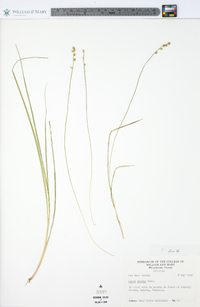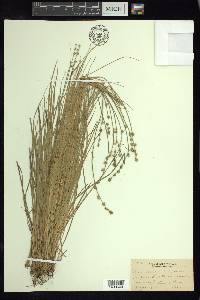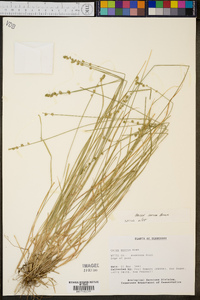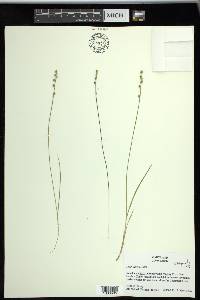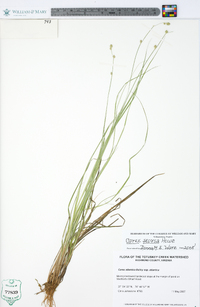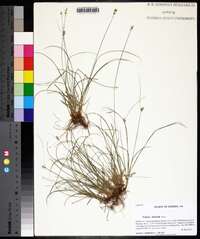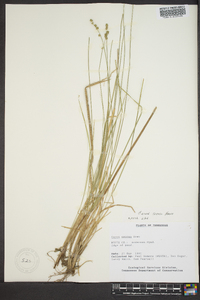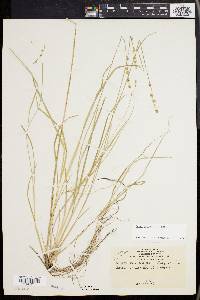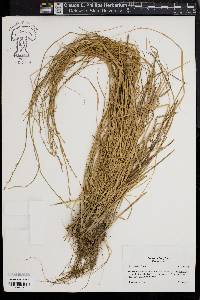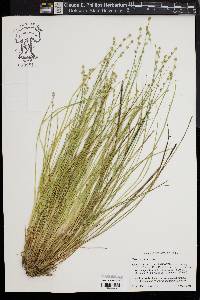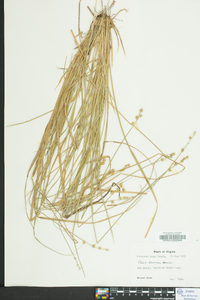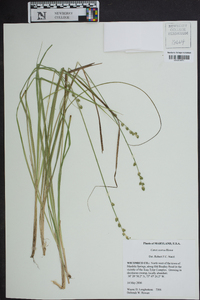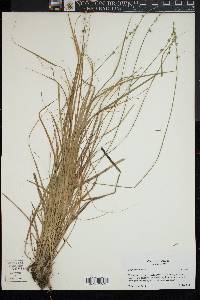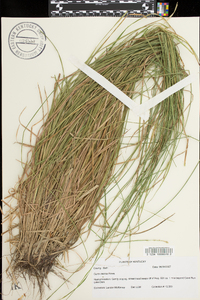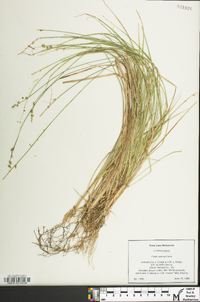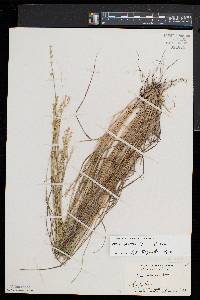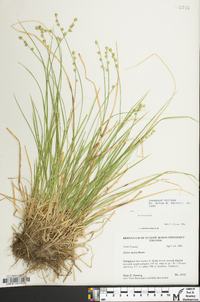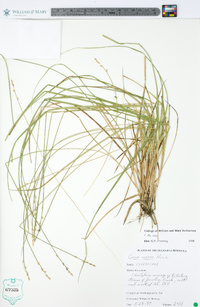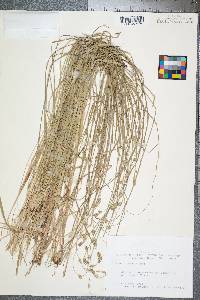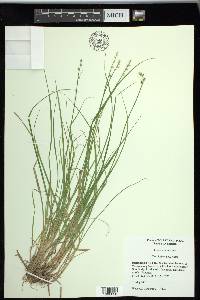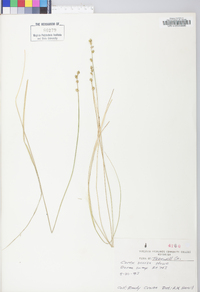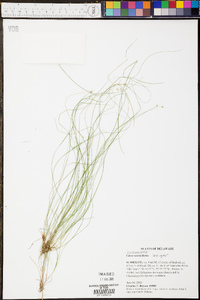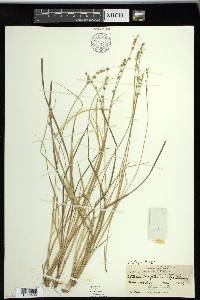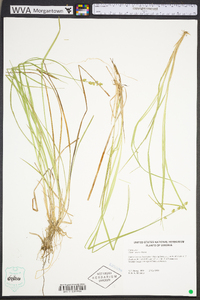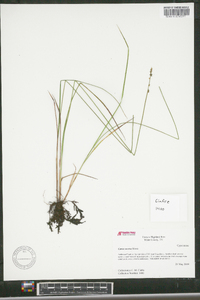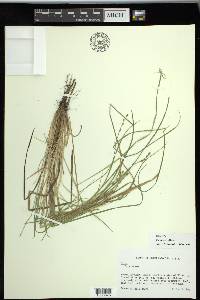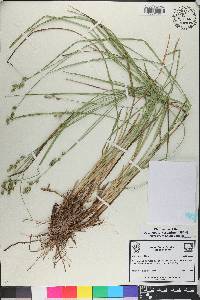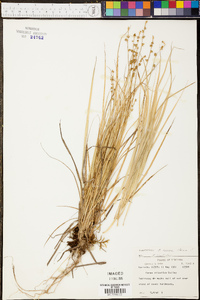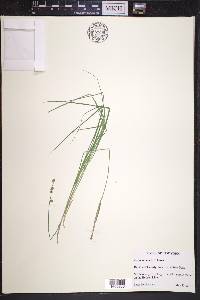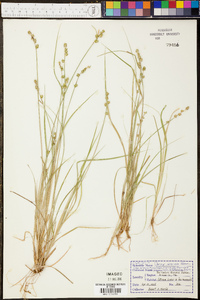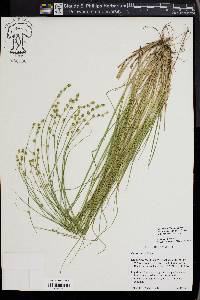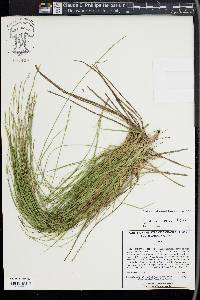Carex seorsa
|
|
|
|
Family: Cyperaceae
Weak Stellate Sedge
|
Culms 15-75 cm. Leaves 2-4 per culm; sheaths with inner band hyaline, 3.5-12 cm, apex deeply concave, glabrous; ligules 1.7-7 mm, apex acute or often emarginate; blades plicate to flat, 9-50 cm × 0.8-3.9 mm, widest leaf 2.1-3.9 mm wide. Inflorescences 1.8-7 cm; spikes 4-8; lateral spikes pistillate often with few staminate flowers proximally, 2.8-10.8 mm, sessile, staminate portion (0-)1-6-flowered, (0-)0.8-4.6 mm, pistillate portion 4-25-flowered, 2-7.6 mm; basal 2 spikes 5-27 mm apart; terminal spike gynecadrous, 4.7-16.5 mm, staminate portion 3-13-flowered, 1.8-12.7 × 0.9-2.1 mm, pistillate portion 6-23-flowered, 2.8-7.3 × 4.4-6 mm. Pistillate scales ovate, 1.2-2.2 × 1-1.6 mm, apex acute. Staminate scales ovate, 1.7-3.3 × 1-1.4 mm, apex acute. Anthers 1-1.9 mm. Perigynia spreading to reflexed, green, 6-14-veined abaxially, 0-6-veined adaxially over achene, elliptic to elliptic-ovate, 1.8-2.9 × 1-1.9 mm, 1.2-2.1 times as long as wide; beak 0.2-0.6 mm, 0.09-0.33 length of body, smooth. Achenes ovate to orbiculate, 1.2-1.6 × 0.85-1.4 mm. Fruiting late spring-early summer. Acidic, sandy, peaty hardwood or Chamaecyparis swamps, thickets; 0-300 m; Ont.; Ala., Ark., Conn., Del., D.C., Fla., Ga., Ind., Ky., Md., Mass., Mich., Miss., N.H., N.J., N.Y., N.C., Ohio, Pa., R.I., S.C., Tenn., Va. Carex seorsa very rarely hybridizes with C. atlantica subsp. atlantica. Carex seorsa is unusual in sect. Stellulatae in its primarily forest understory habitat, lax, spreading habit, perigynia widest in the middle, and smooth perigynia beaks. Its affinities require further study.
Stems densely tufted, aphyllopodic, 2-7 dm, smooth; lvs 2-4 per stem, all in the basal third, usually shorter than the stems, plicate to flat, mostly 1-4 mm wide; spikes 4-8, sessile, small and few-fld, gynaecandrous or the lateral ones often wholly pistillate; anthers 1-2 mm; perigynia 5-25, crowded, widely spreading or the lower reflexed, green, planoconvex, spongy-thickened at base, 6-14-nerved dorsally, 0-6-nerved ventrally, elliptic-ovate, 2-3 נ1-2 mm, 1.2-2.1 times as long as wide, smooth-margined, with a smooth, truncate or obscurely bidentate beak 0.2-0.6 mm, to a third as long as the body; achene lenticular; 2n=48. Wet woods; s. N.H. to Ga., especially on the coastal plain, and irregularly inland to n. O., s. Ont., Mich., nw. Ind., and Tenn. Gleason, Henry A. & Cronquist, Arthur J. 1991. Manual of vascular plants of northeastern United States and adjacent Canada. lxxv + 910 pp. ©The New York Botanical Garden. All rights reserved. Used by permission. From Flora of Indiana (1940) by Charles C. Deam Rare in wet woods and tamarack bogs in the dune area. The known localities for this sedge in Indiana are: Dune Park, Keiser, and Tamarack in Porter County and Pine Station (now north Clark Street, Gary) in Lake County. ...... Indiana Coefficient of Conservatism: C = 10 Wetland Indicator Status: FACW |

